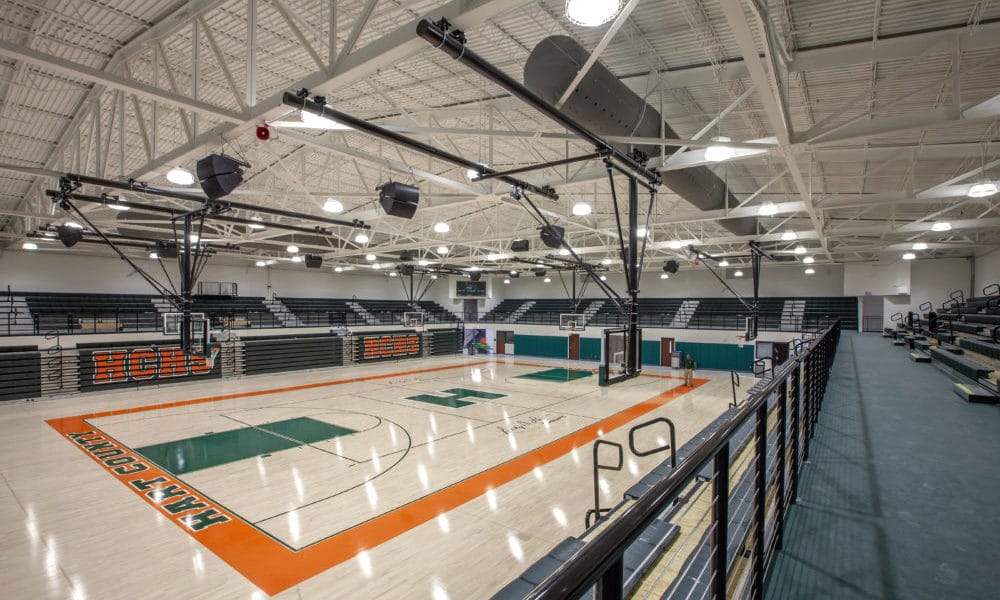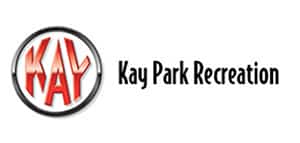By Don Brown
When considering the air quality in your school, it’s likely that sports flooring isn’t the first thing that comes to mind. Unfortunately, not all floors, adhesives and other materials are made equal, and many of them can release pollutants into the air over time.
So, when planning a sports floor installation or upgrade, it’s crucial to understand what materials will be used and how they might affect the air quality in your building.
With students, teachers and staff spending hours per day for multiple years in the building, its indoor air quality (IAQ) is important, and it starts from the ground up.
What’s in Your Air?
Research has proven that major contributors of indoor air pollutants come from the building materials and furnishings used. Volatile organic compounds (VOCs), which can come from certain materials and adhesives, can compromise IAQ and health when they reach a certain threshold.
Poor IAQ can contribute to a condition known as sick building syndrome (SBS). SBS is a catch-all term that refers to a series of symptom complaints for which there is no obvious cause and medical tests reveal no particular abnormalities.
These symptoms can seem mysterious, as they occur when individuals are in the building but disappear when they leave. Similar to the common cold or allergies, symptoms may include irritated eyes, nose and throat, as well as headaches, dizziness and fatigue. Those with asthma can also experience increased symptoms.
Children in particular are more affected by the air quality in schools. According to a study by HealthAffairs, “Exposure to environmental pollutants during important times of physiological development can lead to long-lasting health problems, dysfunction and disease. Children’s lung functioning is not yet fully developed. Compared to adults, they breathe in greater levels of polluted air relative to their weight.”
Better Air, Better Students
A healthier school building can help reduce SBS-related symptoms and more. Research from the Environmental Protection Agency (EPA) links key environmental factors to health outcomes and students’ ability to perform.
Improvements in school environmental quality can enhance academic performance, as well as teacher and staff productivity and retention. One of their studies examining green schools in Washington state reported a 15% reduction in absenteeism and a 5% increase in test scores.
Furthermore, investing in something such as better gymnasium flooring can enhance the physical education experience for students and encourage them to participate in sports while offering them a safe environment in a healthier building.
Creating a healthier building can begin with a sports floor installation, which can occur during a new construction or as part of a renovation project. Being conscious of what kinds of materials your sports floor contractor uses is an important step.
The EPA advises that schools and installers choose flooring that “can be installed with low-VOC adhesives and coatings to minimize the indoor air pollution load and health risks to both installers and occupants. Low VOC cleaners and floor finishes are available. Be sure to consult with the flooring manufacturer when specifying maintenance materials. Use of the wrong maintenance materials can damage resilient flooring. To help ensure longer flooring life, maintain appearance and protect indoor air quality, resilient flooring requires proper maintenance.”
The Sign of Healthy Sports Flooring
To be sure that your sports floor contractor is following best practices when retrofitting or installing a new floor, confirm that your sports floor contractor is working with a safe product with third-party certifications such as FloorScore.
FloorScore is the most recognized IAQ certification standard for hard surface flooring materials, adhesives and underlayments. To become certified, flooring products must undergo an evaluation process, which includes a review of the product’s formulation and the manufacturing site’s document control system, an onsite audit and product emissions testing.
Developed collaboratively in 2005 by the Resilient Floor Covering Institute (RFCI) and SCS Global Services, the FloorScore program certifies that resilient and hard surface flooring products and accessories conform to the requirements of California Specification 01350 (Standard Method v1.1). FloorScore-certified products also conform to the requirements of the SCS EC-10.3-2014 Indoor Air Quality Standard. Laboratory testing is conducted according to California Specification 01350, which includes the Chronic Reference Exposure Level (CREL) concentrations established by the California Office of Environmental Health Hazard Assessment (OEHHA) and procedures developed by the United States Environmental Protection Agency (EPA).
The FloorScore program was established in response to the demand from end-users and architects to work with companies that produce healthy building materials with low VOC emissions.
Ultimately, it provides architects and end-users assurance that indoor spaces are healthier and cleaner. It also qualifies for many green building programs including LEED v4, WELL, BREEAM and CHPS.
Air Quality During Installation
During a sports floor installation, proper ventilation is essential. Simply opening windows or doors is not enough to effectively exhaust contaminants in most cases.
Exhaust or spot ventilation should mechanically pull air out of the building, not push outdoor air into the building. Owners should consult with a proper HVAC contractor prior to their sports floor installation to make sure they are properly prepared to manage air quality during installation.
Ideally, sports floor systems will feature a water-based or low VOC oil-based topcoat. That means there are fewer residual fumes. Not only does this reduce VOC levels, it also means schools can remain in operation when the system is being installed, reducing downtime and avoiding the potential risk of breathing contaminated air.
With students and staff going in and out of a school throughout the day, keeping a school’s air clean is an ongoing activity.
While a sports floor might not be the first thing that comes to mind when considering air quality, it does play a role. Replacing old sports flooring with low VOC containing materials will positively affect the indoor air quality and help provide students and staff with a better environment.
Plus, a new quality sports floor will encourage student participation in gym class and after-school activities and bring a general sense of pride in the school, which might be another breath of fresh air your school needs.
Don Brown heads technical sales at Action Floor Systems, LLC, a company that specializes in high performance sports floor systems to accommodate any application, www.actionfloors.com.















